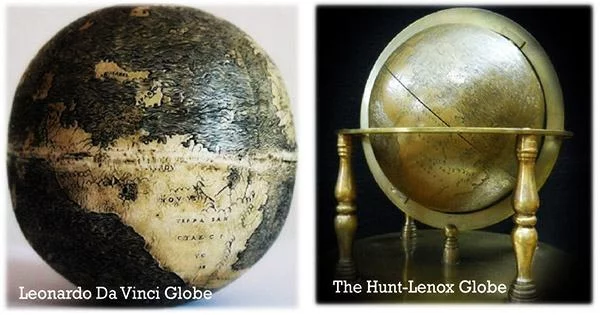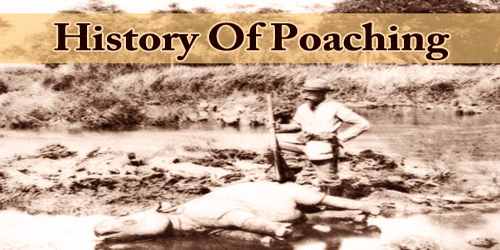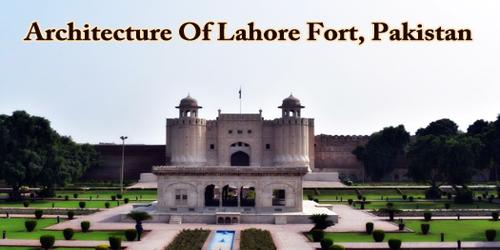The Da Vinci Globe, also known as the “Lenox Globe,” is one of the earliest surviving terrestrial globes created during the Renaissance. The globe, which is thought to date to the early 1500s, was probably made in Florence, Italy, from the lower half of two ostrich eggs. It is inscribed with the hazy and new information about the Americas that European explorers like Christopher Columbus and Amerigo Vespucci brought back at the time.
The lower half of two ostrich eggs were connected to create the Ostrich Egg Globe, a hollow terrestrial globe. The map carved on the globe is an extremely close, if not identical, match to the Hunt–Lenox Globe, a copper globe reliably dated to about 1510. It is also decorated with monsters, intertwining waves and even a shipwrecked sailor.
It is named after its previous owner, the American philanthropist and bibliophile James Lenox, who acquired it in the 19th century. The globe is significant because it provides insights into the state of geographical knowledge during the late 15th century and the early 16th century. The owner of the Ostrich Egg Globe, Stefaan Missinne, claims that it was made in the early 16th century and is therefore the first globe ever to depict the New World.

The globe is hand-engraved in great detail on ostrich egg shells from Pavia by a left-handed Renaissance genius of unquestionable quality. It shows secret knowledge of the map world from the time of Columbus, Cabral, Amerigo Vespucci and Leonardo da Vinci. Central and North America are covered by a vast ocean. The da Vinci globe originates from Florence and dates from 1504. It marks the first time ever that the names of countries such as Brazil, Germania, Arabia and Judea have appeared on a globe.
The globe’s primary investigator, Stefaan Missinne, claimed in 2013 that the globe had been “found” at the London Map Fair in 2012, by an owner who preferred to remain anonymous; that it had passed through at least two dealers’ hands already; and that it “had been part of an important European collection for many decades” before that.
Here are some key details about the Da Vinci Globe:
- Creator: While the globe is often associated with Leonardo da Vinci due to its creation during the same period, it is not definitively attributed to him. The exact creator remains uncertain, but it is believed to have been made in Florence, Italy, between 1504 and 1507.
- Material: The globe is constructed from two joined halves made of engraved and cast bronze. It measures about 4.4 inches (11.2 cm) in diameter.
- Features: The Da Vinci Globe is notable for its depiction of the known world at the time. It includes some geographical inaccuracies, such as the omission of the Americas, as Christopher Columbus’s voyages had not yet fully explored and mapped the New World by the time the globe was created. However, it does show portions of Africa, Asia, and Europe. Jerusalem is depicted at the center of the map.
- Inscriptions: The globe features inscriptions in Latin and includes details about its creation, such as the date and the name of the maker. It also includes a dedication to the Duke of Milan, Ludovico Sforza, which has led to the association with Leonardo da Vinci, who worked for the Duke.
- Historical Significance: The Da Vinci Globe is one of the earliest examples of globes as a means of representing the Earth’s geography. It offers valuable insights into how people perceived the world at the time and serves as an important historical artifact.
Further, in 2013, Missinne claimed that the globe showed “influence from Leonardo’s workshop.” By 2017 he had gained enough certainty to claim that the globe was crafted in precisely 1504 by a left-handed engraver whom Missinne identifies as Leonardo da Vinci himself. North America, which is represented as a group of scattered islands, is totally unlabeled and the globe includes one sentence: “HIC SVNT DRACONES,” or “Here are the Dragons,” according to the Washington Map Society.
The only three names shown in South America are Mundus Novus (“New World”), Terra de Brazil, and Terra Sanctae Crucis (“Land of the Holy Cross”). In 2018, Missinne published a book titled The Da Vinci Globe (the title a reference to The Da Vinci Code (2003)) promoting his theory of the globe’s provenance.
The da Vinci globe now takes its rightful place, surpassing the Lenox globe, its copper-cast identical twin, as the most mysterious globe of our time. As such, this monograph is an essential text in Leonardo studies and in the history of cartography.
The Da Vinci Globe is currently housed in the Rare Book and Manuscript Library at Columbia University in New York City, where it is carefully preserved and made accessible to researchers and the public. While the exact authorship of the globe remains a subject of debate among scholars, its historical and cultural significance is undisputed.
















